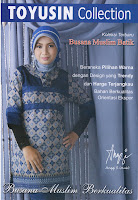A Brief History of Batik Indonesia
Although experts disagree as to the precise origins of batik, samples of dye resistance patterns on cloth can be traced back 1,500 years ago to Egypt and the Middle East . Samples have also been found in Turkey , India , China , Japan and West Africa from past centuries. Although in these countries people were using the technique of dye resisting decoration, within the textile realm, none have developed batik to its present day art form as the highly developed intricate batik found on the island of Java in Indonesia.
 Although there is mention of 'fabrics highly decorated' in Dutch transcripts from the 17th century, most scholars believe that the intricate Javanese batik designs would only have been possible after the importation of finely woven imported cloth, which was first imported to Indonesia from India around the 1800s and afterwards from Europe beginning in 1815. Textile patterns can be seen on stone statues that are carved on the walls of ancient Javanese temples such as Prambanan (AD 800), however there is no conclusive evidence that the cloth is batik. It could possibly be a pattern that was produced with weaving techniques and not dying. What is clear is that in the 19th century batik became highly developed and was well ingrained in Javanese cultural life. Some experts feel that batik was originally reserved as an art form for Javanese royalty. Certainly it's royal nature was clear as certain patterns were reserved to be worn only by royalty from the Sultan's palace. Princesses and noble women may have provided the inspiration for the highly refined design sense evident in traditional patterns. It is highly unlikely though that they would be involved in any more than the first wax application. Most likely, the messy work of dyeing and subsequent waxings was left to court artisans who would work under their supervision.
Although there is mention of 'fabrics highly decorated' in Dutch transcripts from the 17th century, most scholars believe that the intricate Javanese batik designs would only have been possible after the importation of finely woven imported cloth, which was first imported to Indonesia from India around the 1800s and afterwards from Europe beginning in 1815. Textile patterns can be seen on stone statues that are carved on the walls of ancient Javanese temples such as Prambanan (AD 800), however there is no conclusive evidence that the cloth is batik. It could possibly be a pattern that was produced with weaving techniques and not dying. What is clear is that in the 19th century batik became highly developed and was well ingrained in Javanese cultural life. Some experts feel that batik was originally reserved as an art form for Javanese royalty. Certainly it's royal nature was clear as certain patterns were reserved to be worn only by royalty from the Sultan's palace. Princesses and noble women may have provided the inspiration for the highly refined design sense evident in traditional patterns. It is highly unlikely though that they would be involved in any more than the first wax application. Most likely, the messy work of dyeing and subsequent waxings was left to court artisans who would work under their supervision.
 Although there is mention of 'fabrics highly decorated' in Dutch transcripts from the 17th century, most scholars believe that the intricate Javanese batik designs would only have been possible after the importation of finely woven imported cloth, which was first imported to Indonesia from India around the 1800s and afterwards from Europe beginning in 1815. Textile patterns can be seen on stone statues that are carved on the walls of ancient Javanese temples such as Prambanan (AD 800), however there is no conclusive evidence that the cloth is batik. It could possibly be a pattern that was produced with weaving techniques and not dying. What is clear is that in the 19th century batik became highly developed and was well ingrained in Javanese cultural life. Some experts feel that batik was originally reserved as an art form for Javanese royalty. Certainly it's royal nature was clear as certain patterns were reserved to be worn only by royalty from the Sultan's palace. Princesses and noble women may have provided the inspiration for the highly refined design sense evident in traditional patterns. It is highly unlikely though that they would be involved in any more than the first wax application. Most likely, the messy work of dyeing and subsequent waxings was left to court artisans who would work under their supervision.
Although there is mention of 'fabrics highly decorated' in Dutch transcripts from the 17th century, most scholars believe that the intricate Javanese batik designs would only have been possible after the importation of finely woven imported cloth, which was first imported to Indonesia from India around the 1800s and afterwards from Europe beginning in 1815. Textile patterns can be seen on stone statues that are carved on the walls of ancient Javanese temples such as Prambanan (AD 800), however there is no conclusive evidence that the cloth is batik. It could possibly be a pattern that was produced with weaving techniques and not dying. What is clear is that in the 19th century batik became highly developed and was well ingrained in Javanese cultural life. Some experts feel that batik was originally reserved as an art form for Javanese royalty. Certainly it's royal nature was clear as certain patterns were reserved to be worn only by royalty from the Sultan's palace. Princesses and noble women may have provided the inspiration for the highly refined design sense evident in traditional patterns. It is highly unlikely though that they would be involved in any more than the first wax application. Most likely, the messy work of dyeing and subsequent waxings was left to court artisans who would work under their supervision. 

Comments